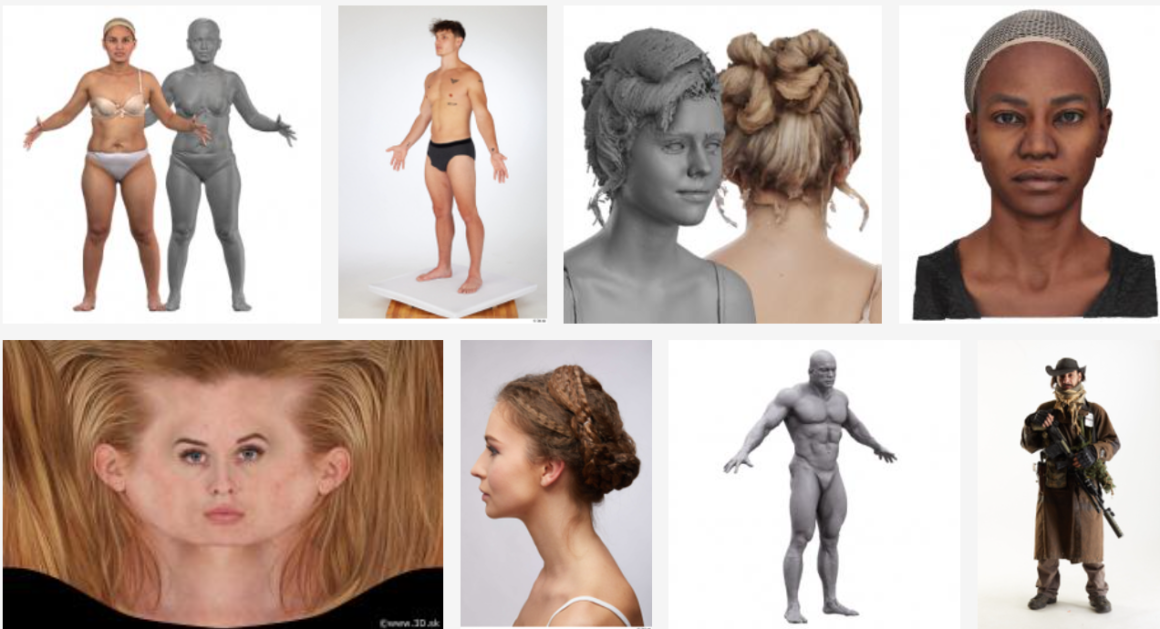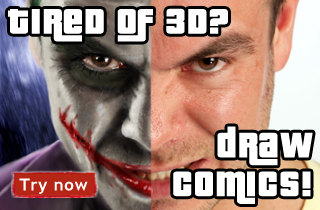In a nearly three-hour live stream, 3D character artist Abe_Leal3D takes viewers on a creative journey: transforming a hyper-realistic 3D head scan from 3D.sk into a fully imagined extraterrestrial character. The result isn’t just a creature—it’s a demonstration of how real-world anatomical data can fuel and elevate character design, even in futuristic or speculative worlds.
🧠 Why 3D Scans from 3D.sk?
Before diving into the process, it’s important to talk about the foundation: the scans themselves. 3D.sk has long been one of the industry’s most respected sources for photogrammetry-based scans of real human bodies. These aren’t generic models—they’re highly detailed captures of real people, with all the nuance, imperfection, and complexity that comes with true anatomy.

Here’s why 3D.sk references stand out:
- ✅ Ultra-High-Resolution geometry and textures
- ✅ Diverse real subjects
- ✅ Multiple angles & clean topology for reference or direct use
- ✅ Professional-grade scan fidelity perfect for sculpting, study, and stylization
- ✅ Includes photo sets, 2D references, and skin texture libraries
For artists working in 3D modeling, sculpting, VFX, or even traditional drawing, these assets are a goldmine of anatomical truth. The difference between guessing a fold or pore and observing it in photorealistic detail is enormous—especially when the goal is realism or believable exaggeration.
As Abe said in the video:
“Your work is only as good as your reference.”
And with 3D.sk, you’re not just getting a reference—you’re getting access to a library of real, uncompromising human anatomy.
🧱 Building from Reality
Abe begins his sculpt using one of the male scans from 3D.sk. Brought into ZBrush, the scan already contains authentic facial structure, realistic asymmetry, and natural anatomical subtleties. These are things that are often misjudged when sculpting from imagination—like the subtle puffiness around the eye socket, or the way the nasolabial fold transitions into the cheek.

The beauty of working from these scans is that they do not lie. Anatomy behaves a certain way, and seeing it in such fidelity helps artists understand how to push and pull form in believable ways.
🔮 From Real to Imagined
From this realistic base, Abe begins crafting a creature. The model is warped, stretched, stylized—but never loses its grounding. Long elf-like ears appear, cheekbones become exaggerated, horns are added, and the nose elongates unnaturally.

Because the base is rooted in reality, the deformation feels purposeful, not arbitrary. It’s a fusion of real-world anatomy with creative expression—a believable fantasy.
🧴 Real Skin, Real Detail
One of the highlights of the process is when Abe revisits 3D.sk, this time exploring its massive texture library—specifically the face skin texture section, which contains hundreds of ultra-close photographic samples of human skin in different ages, races, and conditions.

These textures were used to bring the demon’s skin to life—wrinkles, pores, scars, and subtle surface imperfections were either directly projected or used as visual guides. Even when the color changes (as in the final purple-tinted result), the underlying realism remains.
🧬 Fidelity That Persists Through Stylization
Throughout the sculpt, Abe compares the monster with the original human reference. The lips retain the same fold structure. The brow wrinkles behave as they would on a real elderly man. Even when painted and lit in a stylized way, the illusion of life remains intact.

That’s the magic of combining fantasy with reference: the brain believes it, because it’s based on truth.
🎨 Final Presentation
The final sculpt is finished with color, materials, and integrated into a sci-fi scene—armored, textured, posed. It’s no longer a simple scan or even just a model; it’s a fully fleshed-out character that lives in its own world.

🧠 Conclusion
This project by Abe_Leal3D is a brilliant showcase of how reference-based workflows, particularly using 3D scans from 3D.sk, can transform the creative process. Instead of guessing, you observe. Instead of approximating, you understand.
You don’t have to stay in the realm of realism—but when you start there, you can create stylized work that still feels convincing, believable, and full of life.
If you’re an artist, modeler, or anatomy student, using real human scans and textures isn’t a shortcut—it’s a catalyst. And as this stream clearly shows, 3D.sk continues to be an unmatched resource for anyone looking to level up their work!
🎁 Try It Yourself – Free Sample Available!
Curious to try this kind of workflow yourself?
If you want to explore the same high-quality scans and textures that Abe_Leal3D used in his project, you can start right away – we offer a free sample on 3D.sk. It includes real 3D head scans and textures that you can use for practice, personal projects, or to simply test the quality before diving in deeper.








Latest Comments